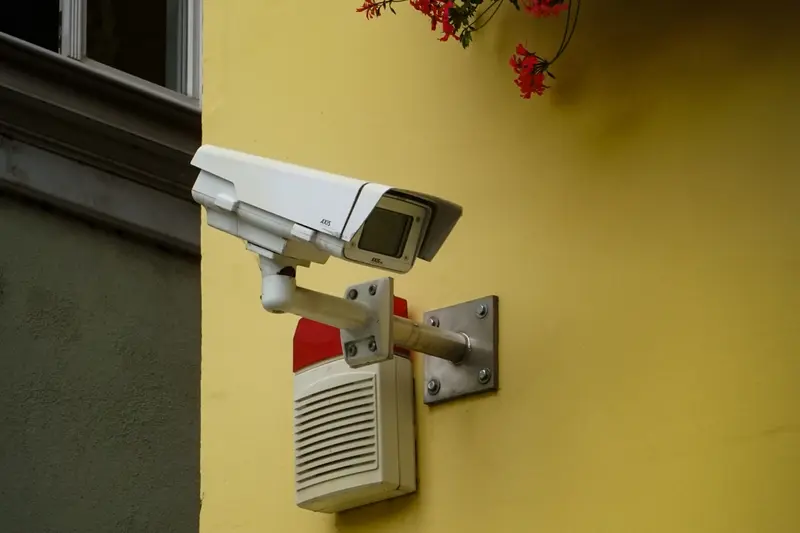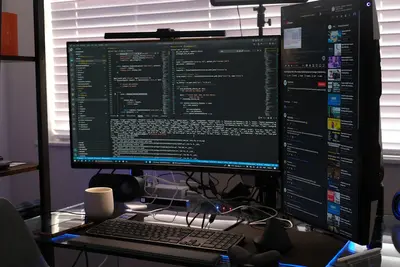I’ll show you how to set up vulnerability scanning on Alpine Linux! This helps you find security weaknesses before the bad guys do. Essential for keeping your system safe!
🤔 What is Vulnerability Scanning?
Vulnerability scanning automatically checks your system for security problems. It’s like having a security expert test your locks, windows, and doors. The scanner finds weak spots so you can fix them!
Why scan for vulnerabilities?
- Find security holes early
- Check for outdated software
- Detect misconfigurations
- Meet compliance requirements
- Prevent breaches
🎯 What You Need
Before starting, you’ll need:
- Alpine Linux running
- Root or sudo access
- Internet connection
- At least 1GB free space
- About 20 minutes
📋 Step 1: Install Scanning Tools
Let’s install essential security scanners:
# Update packages
apk update
# Install basic scanning tools
apk add nmap nikto lynis
# Install dependencies
apk add perl perl-net-ssleay
# Install additional tools
apk add openssl curl wget git
# For building tools from source
apk add gcc g++ make linux-headersVerify installations:
# Check tools
nmap --version
nikto -Version
lynis --version📋 Step 2: System Security Audit
Start with Lynis for system scanning:
# Run basic audit
lynis audit system
# Run with suggestions
lynis audit system --quick
# Save report
lynis audit system --report-file /tmp/lynis-report.txt
# Check specific areas
lynis show groups
lynis audit system --tests-from-group firewallCreate audit script:
# System audit script
cat > /usr/local/bin/security-audit << 'EOF'
#!/bin/sh
# Security Audit Script
REPORT_DIR="/var/log/security-audits"
mkdir -p "$REPORT_DIR"
DATE=$(date +%Y%m%d_%H%M%S)
echo "🔍 Starting Security Audit..."
echo "=============================="
# Run Lynis
echo "Running system audit..."
lynis audit system --quiet --report-file "$REPORT_DIR/lynis_$DATE.txt"
# Extract warnings
echo ""
echo "⚠️ Security Warnings:"
grep -E "warning\[\]|suggestion\[\]" "$REPORT_DIR/lynis_$DATE.txt" | head -10
echo ""
echo "📊 Audit complete! Report saved to: $REPORT_DIR/lynis_$DATE.txt"
EOF
chmod +x /usr/local/bin/security-audit📋 Step 3: Network Vulnerability Scanning
Use Nmap for network scanning:
# Basic vulnerability scan
nmap -sV --script vuln localhost
# Scan common vulnerabilities
nmap --script vuln,exploit localhost
# Scan specific services
nmap -p 80,443 --script http-vuln* localhost
# Full scan (careful - intensive)
nmap -sV -sC -O -A localhostCreate network scanner:
# Network vulnerability scanner
cat > /usr/local/bin/net-vuln-scan << 'EOF'
#!/bin/sh
# Network Vulnerability Scanner
TARGET="${1:-localhost}"
OUTPUT_DIR="/var/log/network-scans"
mkdir -p "$OUTPUT_DIR"
echo "🌐 Scanning network vulnerabilities on: $TARGET"
echo "==========================================="
# Quick scan
echo "Running quick vulnerability scan..."
nmap -sV --script vuln "$TARGET" -oN "$OUTPUT_DIR/quick-scan.txt"
# Service detection
echo "Detecting services..."
nmap -sV -p- "$TARGET" -oN "$OUTPUT_DIR/services.txt"
# Show results
echo ""
echo "📋 Scan Results:"
grep -E "open|vulnerable" "$OUTPUT_DIR/quick-scan.txt" | head -20
echo ""
echo "✅ Scan complete! Full results in: $OUTPUT_DIR/"
EOF
chmod +x /usr/local/bin/net-vuln-scan📋 Step 4: Web Application Scanning
Set up web vulnerability scanning:
# Configure Nikto
cat > ~/.nikto.conf << 'EOF'
UPDATES=auto
PROMPTS=no
REPORT_DIR=/var/log/nikto
EOF
# Create web scanner
cat > /usr/local/bin/web-scan << 'EOF'
#!/bin/sh
# Web Application Scanner
URL="${1:-http://localhost}"
REPORT_DIR="/var/log/web-scans"
mkdir -p "$REPORT_DIR"
DATE=$(date +%Y%m%d_%H%M%S)
echo "🌐 Scanning web application: $URL"
echo "===================================="
# Run Nikto scan
nikto -h "$URL" -output "$REPORT_DIR/nikto_$DATE.txt"
# Check for common issues
echo ""
echo "🔍 Checking common vulnerabilities..."
# Check headers
curl -I -s "$URL" > "$REPORT_DIR/headers_$DATE.txt"
echo "Security Headers:"
grep -E "X-Frame-Options|X-Content-Type|Strict-Transport" "$REPORT_DIR/headers_$DATE.txt" || echo "⚠️ Missing security headers!"
# Check SSL/TLS
if [[ "$URL" == https://* ]]; then
echo ""
echo "🔒 Checking SSL/TLS..."
echo | openssl s_client -connect "${URL#https://}:443" 2>/dev/null | grep -E "Protocol|Cipher"
fi
echo ""
echo "📊 Scan complete! Reports in: $REPORT_DIR/"
EOF
chmod +x /usr/local/bin/web-scan📋 Step 5: Automated Scanning
Set up automated vulnerability scanning:
# Create master scanner
cat > /usr/local/bin/vuln-scan-all << 'EOF'
#!/bin/sh
# Comprehensive Vulnerability Scanner
LOG_DIR="/var/log/vulnerability-scans"
REPORT_FILE="$LOG_DIR/report_$(date +%Y%m%d).txt"
mkdir -p "$LOG_DIR"
{
echo "🛡️ Comprehensive Vulnerability Scan"
echo "=================================="
echo "Date: $(date)"
echo ""
# System scan
echo "1. System Security Audit"
echo "------------------------"
lynis audit system --quiet | grep -E "warning|suggestion" | head -10
echo ""
# Network scan
echo "2. Network Vulnerabilities"
echo "-------------------------"
nmap -sV --script vuln localhost | grep -E "VULNERABLE|open" | head -10
echo ""
# Package audit
echo "3. Package Vulnerabilities"
echo "-------------------------"
apk version -v | grep -E "<" | head -10
echo ""
# Configuration check
echo "4. Security Configuration"
echo "------------------------"
# Check important files
[ -f /etc/ssh/sshd_config ] && {
echo -n "SSH Root Login: "
grep -E "^PermitRootLogin" /etc/ssh/sshd_config || echo "Not configured"
}
echo ""
echo "✅ Scan completed at $(date)"
} | tee "$REPORT_FILE"
# Send alert if critical issues
grep -q "VULNERABLE\|critical" "$REPORT_FILE" && {
echo "⚠️ CRITICAL VULNERABILITIES FOUND!"
echo "Check report: $REPORT_FILE"
}
EOF
chmod +x /usr/local/bin/vuln-scan-all
# Add to cron for weekly scans
echo "0 2 * * 0 /usr/local/bin/vuln-scan-all" | crontab -📋 Step 6: Fix Common Vulnerabilities
Create remediation helper:
# Vulnerability fixer
cat > /usr/local/bin/fix-vulns << 'EOF'
#!/bin/sh
# Common Vulnerability Fixes
echo "🔧 Applying Security Fixes..."
echo "============================"
# Update all packages
echo "Updating packages..."
apk update && apk upgrade
# Fix SSH configuration
echo "Securing SSH..."
sed -i 's/^#*PermitRootLogin.*/PermitRootLogin no/' /etc/ssh/sshd_config
sed -i 's/^#*PasswordAuthentication.*/PasswordAuthentication no/' /etc/ssh/sshd_config
# Set secure permissions
echo "Setting secure permissions..."
chmod 600 /etc/ssh/sshd_config
chmod 644 /etc/passwd
chmod 600 /etc/shadow
# Remove unnecessary services
echo "Removing unnecessary services..."
rc-update del telnet 2>/dev/null
echo ""
echo "✅ Basic security fixes applied!"
echo "⚠️ Remember to review and test changes!"
EOF
chmod +x /usr/local/bin/fix-vulns🎮 Practice Exercise
Try scanning your system:
- Run system audit
- Scan network services
- Check web server
- Review results
# Full security check
security-audit
# Network scan
net-vuln-scan localhost
# If running web server
web-scan http://localhost
# Comprehensive scan
vuln-scan-all🚨 Troubleshooting Common Issues
Scan Takes Too Long
Speed up scans:
# Limit port range
nmap -p 1-1000 localhost
# Quick scan mode
lynis audit system --quick
# Skip slow tests
nikto -h localhost -Tuning 123456789Permission Denied
Fix permission issues:
# Run as root
sudo vuln-scan-all
# Fix tool permissions
chmod +x /usr/local/bin/*scan*
# Check user access
groupsFalse Positives
Handle false alarms:
# Create exceptions file
cat > /etc/lynis/custom.prf << EOF
# Skip false positive tests
skip-test=FILE-6310
skip-test=NETW-3032
EOF
# Verify findings manually
nmap -sV -p [port] localhost💡 Pro Tips
Tip 1: Scan Scheduling
Optimize scan timing:
# Off-peak scanning
echo "0 3 * * * /usr/local/bin/vuln-scan-all" | crontab -
# Quick daily, full weekly
echo "0 1 * * * lynis audit system --quick" | crontab -
echo "0 3 * * 0 /usr/local/bin/vuln-scan-all" | crontab -Tip 2: Custom Checks
Add your own checks:
# Custom security checks
cat >> /usr/local/bin/custom-checks << 'EOF'
#!/bin/sh
# Check for default passwords
grep -E "admin:admin|root:root" /etc/passwd && echo "WARNING: Default passwords!"
# Check for world-writable files
find / -perm -002 -type f 2>/dev/null | head -10
EOFTip 3: Report Dashboard
Create summary dashboard:
# Vulnerability dashboard
cat > /usr/local/bin/vuln-dashboard << 'EOF'
#!/bin/sh
clear
echo "🛡️ Security Dashboard"
echo "===================="
echo "Last scan: $(ls -t /var/log/vulnerability-scans/report_*.txt | head -1)"
echo ""
echo "Open ports: $(nmap -p- localhost | grep -c open)"
echo "Outdated packages: $(apk version -v | grep -c "<")"
echo "Security warnings: $(grep -c warning /var/log/security-audits/lynis_*.txt | tail -1)"
echo ""
EOF
chmod +x /usr/local/bin/vuln-dashboard✅ Verification Steps
Verify scanning works properly:
# Check all scanners
which lynis nmap nikto
# Run test scans
lynis show version
nmap --script-help vuln
nikto -Help
# Check reports
ls -la /var/log/*scan*/
# Verify automation
crontab -l | grep scan🏆 What You Learned
Excellent work! You can now:
- ✅ Install vulnerability scanners
- ✅ Scan system security
- ✅ Check network vulnerabilities
- ✅ Automate scanning
- ✅ Fix common issues
Your system is much more secure!
🎯 What’s Next?
Now that you can scan for vulnerabilities, explore:
- Setting up intrusion detection
- Implementing security monitoring
- Creating incident response plans
- Advanced penetration testing
Remember, regular scanning catches problems early. I scan my systems weekly and always before major changes. Stay ahead of the threats!
Keep scanning, stay secure! 🛡️




